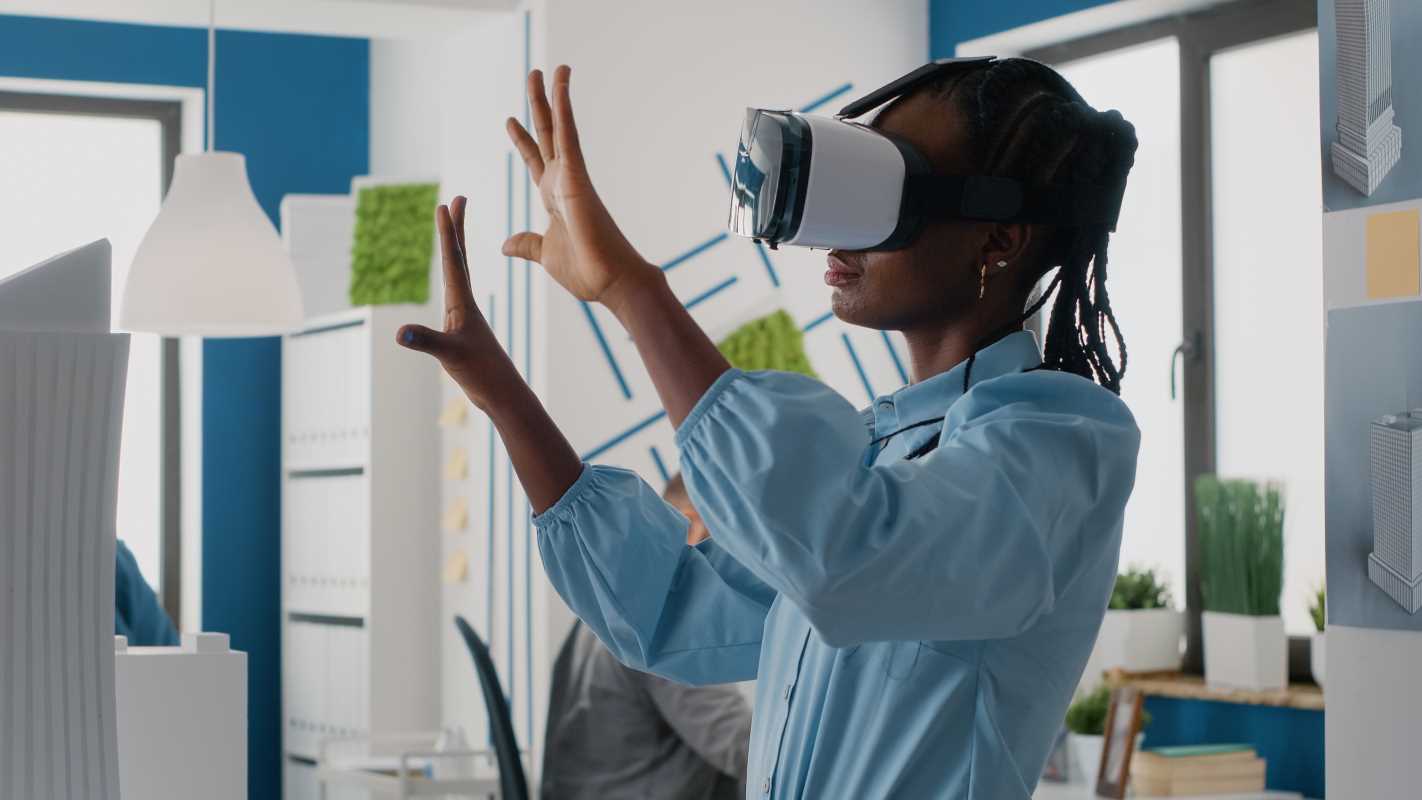Picture yourself starting your biology lesson by examining a lifelike 3D cell model, or perhaps you're stepping back in time to experience historical events firsthand. Virtual Reality (VR) transforms the way students absorb information, turning education into a more immersive and dynamic adventure. This technology isn't just for tech enthusiasts; whether you're an undergraduate, pursuing a graduate degree, or simply eager to learn, incorporating VR into your studies can elevate your educational experience. It adds an exciting, hands-on dimension to learning, making your quest for knowledge not only more compelling but also more effective.
Understanding the Basics of Virtual Reality
Before jumping into using VR for your studies, grasping the fundamental concepts is good:
- Virtual Reality (VR): A simulated experience that can be similar to or completely different from the real world.
- Hardware: Includes VR headsets like the Oculus Rift or HTC Vive, which display the virtual environment.
- Software: Applications and programs that create and manage VR experiences.
- Interactivity: The ability to interact with the virtual environment through controllers or gesture recognition.
- Immersion: The feeling of being physically present in a non-physical world.
Benefits of Virtual Reality in Education
Integrating VR into your study routine provides several advantages:
- Enhanced Engagement: VR makes learning more interesting by providing interactive experiences that keep you focused.
- Improved Understanding: Complex subjects become easier to grasp when you can visualize and interact with them in 3D.
- Safe Simulation: Practice skills in a risk-free environment, whether you perform a chemical experiment or conduct a surgery.
- Personalized Learning: Tailor your learning experiences to match your pace and style.
- Collaborative Research: Work with peers in a virtual space to share ideas and conduct joint projects.
Getting Started with VR Tools
Ready to dive into VR? Here’s how to get started:
- Choose the Right VR Headset: Research and select a headset that fits your budget and meets your educational needs.
- Install Necessary Software: Depending on your field of study, install software that provides relevant VR content.
- Set Up Your Space: Ensure you have a safe, open area to move around without obstacles.
- Learn the Basics: Familiarize yourself with the headset’s controls and navigation within VR environments.
- Explore Educational Content: Start with beginner-friendly applications to get a feel for how VR can aid your learning.
Integrating VR into Study Routines
Incorporating VR into your daily study habits boosts your learning efficiency. Here are some practical tips:
- Schedule VR Sessions: Allocate specific times during the week dedicated to VR study activities.
- Combine with Traditional Methods: Use VR alongside textbooks and lectures to reinforce concepts.
- Set Clear Objectives: Know what you want to achieve in each VR session, whether it’s understanding a concept or practicing a skill.
- Collaborate with Peers: Use VR to work on group projects or study together in a virtual environment.
- Track Your Progress: Keep a journal of your VR experiences and note any improvements or areas that need more attention.
Overcoming Challenges in VR Learning
While VR offers many benefits, it also presents challenges. Here are some ways to tackle common obstacles:
- Cost: VR equipment can be expensive. Look for student discounts or consider sharing resources with classmates.
- Technical Issues: Ensure your hardware and software are up-to-date. Regular maintenance can prevent many problems.
- Motion Sickness: Start with shorter sessions and take breaks to minimize discomfort.
- Accessibility: If you have physical limitations, choose VR applications that accommodate your needs.
- Distractions: Create a focused study environment by minimizing external interruptions during VR sessions.
Making the Most of VR in Your Academic Journey
To fully benefit from VR, consider these additional tips:
- Stay Updated: VR technology constantly evolves. Keep up with the latest developments to utilize new features and tools.
- Join VR Communities: Engage with other students and educators using VR to exchange tips and resources.
- Customize Your Experience: Adjust settings and choose applications that best fit your learning style and objectives.
- Feedback and Improvement: Regularly assess how VR impacts your studies and make necessary adjustments.
- Explore Different Subjects: Don’t limit yourself to one area. Experiment with VR in various disciplines to discover new interests.
Future Trends in VR Education
The future of VR in education looks promising, with several trends on the horizon:
- Increased Accessibility: As technology advances, VR tools will become more affordable and widely available to students.
- Enhanced Interactivity: Future VR applications will offer more interactive and adaptive learning experiences tailored to individual needs.
- Integration with Other Technologies: VR will increasingly work alongside augmented reality (AR) and artificial intelligence (AI) to provide comprehensive educational solutions.
- Expanded Educational Content: More subjects and courses will adopt VR, providing diverse learning opportunities across disciplines.
- Collaborative Virtual Classrooms: Virtual environments will facilitate more interactive and collaborative online classes, bridging the gap between remote learners.
These trends can further enhance your learning experience and keep you ahead in your academic pursuits.







